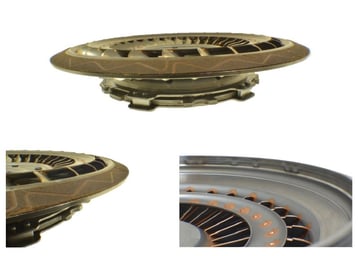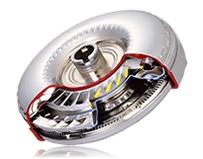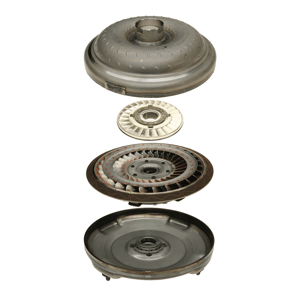Emerging Torque Converter Technology
 As vehicle design evolves and automatic transmissions continue to develop, so does the technology that goes inside them. Engineers and manufacturers are constantly tasked with improving or creating parts that are better suited to accommodate new designs, more speeds, and differentiating benefits. As a result, torque converter technology is one segment going through a period of change and innovation. In this post, we'll discuss the emerging torque converter technology making the biggest waves in the automatic transmission market. (Image provided by ATRA.)
As vehicle design evolves and automatic transmissions continue to develop, so does the technology that goes inside them. Engineers and manufacturers are constantly tasked with improving or creating parts that are better suited to accommodate new designs, more speeds, and differentiating benefits. As a result, torque converter technology is one segment going through a period of change and innovation. In this post, we'll discuss the emerging torque converter technology making the biggest waves in the automatic transmission market. (Image provided by ATRA.)
Emerging Torque Converter Technologies for Automatic Transmissions
The torque converter in an automatic transmission application serves the same purpose as the clutch in a manual application: it allows the engine to continue to run even when the vehicle is stopped. However, the torque converter uses transmission fluid in place of a physical connection device (the clutch). While a wide range of torque converter technologies can already be found in vehicles today, here are a few of the most prominent emerging torque converter innovations in the market:
Hyper-elliptical Torque Converters
 Hyper-elliptical torque converters (also known as super squashed torque converters) were designed with an thin oval cross-section designed to reduce the thickness of the engine and transmission overall. Not only does this provide packaging benefits, but their slim profile makes hyper-elliptical technology ideal for compact and lightweight passenger vehicles and applications.
Hyper-elliptical torque converters (also known as super squashed torque converters) were designed with an thin oval cross-section designed to reduce the thickness of the engine and transmission overall. Not only does this provide packaging benefits, but their slim profile makes hyper-elliptical technology ideal for compact and lightweight passenger vehicles and applications.
(Image from Exedy.)
From the driver's perspective, hyper-elliptical tech allows for "smooth take-off performance and additional refinement." In the eyes of a rebuilder, the reduced axial dimension is even thinner than other flat-model converters.
Concave Clutch Torque Converters
 The development of the concave clutch is perhaps the newest and most cutting-edge advancement in torque converter technology — so new, in fact, that even experts in the industry have a lot more to learn about it. Concave clutch torque converters can only be found in 10-speed late model transmissions, including 2017-2018 Ford and GM models. According to Lance Wiggins, ATRA Technical Director, the concave clutch is identical to the converter clutch in that it creates a 1-1 connection between the engine and transmission. However, the difference is that the concave clutch uses the beveled edge of the converter instead of the flat edge.
The development of the concave clutch is perhaps the newest and most cutting-edge advancement in torque converter technology — so new, in fact, that even experts in the industry have a lot more to learn about it. Concave clutch torque converters can only be found in 10-speed late model transmissions, including 2017-2018 Ford and GM models. According to Lance Wiggins, ATRA Technical Director, the concave clutch is identical to the converter clutch in that it creates a 1-1 connection between the engine and transmission. However, the difference is that the concave clutch uses the beveled edge of the converter instead of the flat edge.
(Image provided by ATRA.)
This revolutionary rounded (concave) design and function reduces gear slippage and dragging from downward pressure. The concave technology was also developed to conserve space inside the unit, and could potentially provide a better fuel economy and a smoother apply for the driver, says Wiggins.
Servicing New Torque Converter Tech
Keeping up with the newest transmission technology can be a challenge for rebuild shops both big and small. In the case of emerging torque converter technology, the developments we've described in this post as well as many more to come must deal with the challenges presented by a higher number of gears in late model transmission applications. While many of these 8, 9, 10+ speed transmissions are installed in vehicles you might not see in your shop for a few years, now is the time to start preparing your techs to service these new technologies they've likely never seen before. Investigating training resources and opportunities today, such as studying rebuilding procedures provided by ATRA or your sealing provider, will allow your shop to service these torque converters as soon as they start to appear in your shop (while many of your competitors may not be able to do the same).


